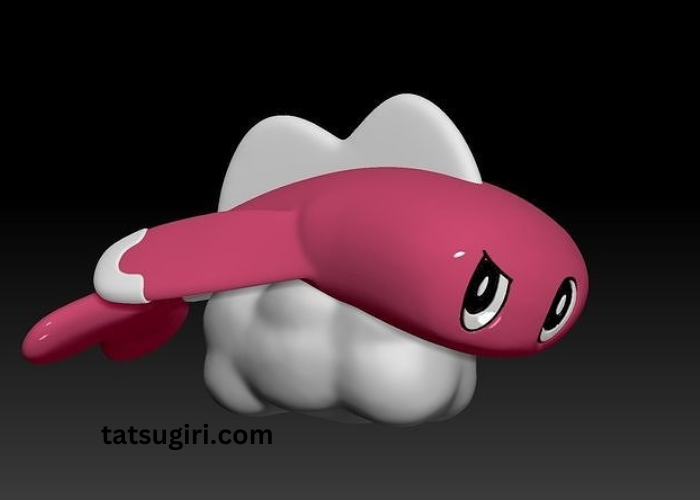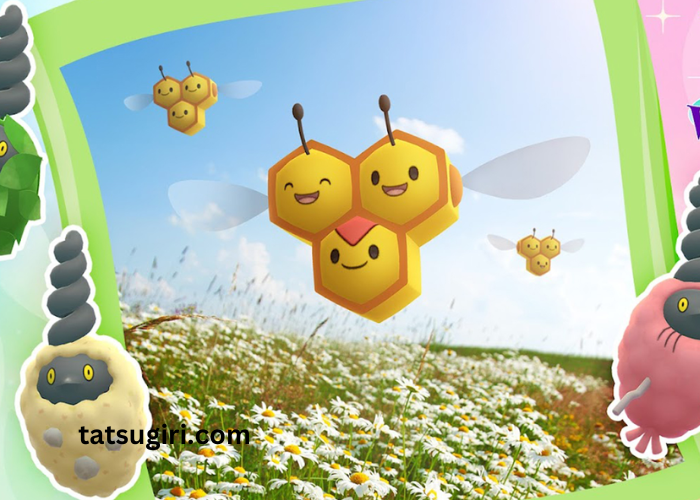Droopy Tatsugiri is a fascinating marine creature that has captured the imagination of nature enthusiasts and researchers alike. This unique species, with its distinctive appearance and captivating behavior, is a true gem of the underwater world. In this comprehensive guide, we will delve into the history, characteristics, habitat, and fascinating facts about Droopy Tatsugiri, as well as explore the efforts to conserve and protect this remarkable animal.
The History and Origins of Droopy Tatsugiri
Droopy Tatsugiri is a species that has been known to the scientific community for decades, with its earliest documented sightings dating back to the late 19th century. The origins of this enigmatic creature can be traced to the coastal regions of the Pacific Ocean, where it has thrived for centuries, adapting to the diverse marine ecosystems found in this vast expanse.
Characteristics and Physical Appearance of Droopy Tatsugiri
Droopy Tatsugiri is a truly unique creature, with a distinct physical appearance that sets it apart from other marine life. Its most striking feature is its elongated, drooping body, which can reach lengths of up to 2 meters (6.5 feet) in some individuals. The body is covered in a soft, gelatinous skin that ranges in color from pale blue to vibrant purple, depending on the individual’s habitat and environmental conditions.
The head of the Droopy Tatsugiri is small and rounded, with a pair of large, expressive eyes that seem to convey a sense of gentle curiosity. Its mouth is small and equipped with delicate, brush-like tentacles that it uses to filter-feed on plankton and other microscopic organisms. The creature’s most distinctive feature, however, is its pair of long, drooping appendages that extend from the sides of its body, giving it a truly otherworldly appearance.
Habitat and Natural Habitat of Droopy Tatsugiri
Droopy Tatsugiri is found in the warm, tropical waters of the Pacific Ocean, primarily in the coastal regions of Southeast Asia and the western Pacific. These creatures thrive in shallow, nutrient-rich environments, such as coral reefs, seagrass beds, and mangrove forests, where they can access a steady supply of their preferred food sources.
One of the fascinating aspects of Droopy Tatsugiri’s habitat is its ability to adapt to a wide range of environmental conditions. While they are most commonly found in shallow, sheltered waters, they have also been observed in deeper, more open ocean environments, where they use their unique physical features to navigate the currents and hunt for prey.
Interesting Facts about Droopy Tatsugiri
Droopy Tatsugiri is a truly remarkable creature, and there are many fascinating facts about its biology and behavior that have captured the attention of researchers and nature enthusiasts alike. For example, did you know that Droopy Tatsugiri is capable of changing the color of its skin to blend in with its surroundings, a adaptation that helps it evade predators and ambush its prey?
Another intriguing fact about Droopy Tatsugiri is its unique reproductive strategy. These creatures are hermaphroditic, meaning they possess both male and female reproductive organs. This allows them to engage in a complex mating ritual, where two individuals exchange genetic material and then each go on to produce their own offspring.
Conservation Efforts and Protection Status of Droopy Tatsugiri
Despite its captivating charm, Droopy Tatsugiri faces a number of threats to its long-term survival. Habitat loss, pollution, and overfishing are just a few of the challenges that this species must contend with in its natural environment. In response to these growing concerns, conservation efforts have been initiated to protect and preserve Droopy Tatsugiri populations around the world.
One of the key initiatives in this regard is the establishment of marine protected areas, where Droopy Tatsugiri and other vulnerable species can thrive without the threat of human interference. Additionally, research and monitoring programs have been implemented to better understand the ecology and population dynamics of Droopy Tatsugiri, with the goal of informing more effective conservation strategies.
How to Care for Droopy Tatsugiri as a Pet
While Droopy Tatsugiri is a captivating creature, it is important to note that they are not well-suited for life in captivity. These animals have very specific environmental and dietary requirements that can be challenging to replicate in a home aquarium setting. Additionally, the stress of captivity can have a detrimental effect on their health and well-being.
If you are truly passionate about Droopy Tatsugiri and wish to learn more about them, we recommend exploring educational resources, such as documentaries, books, and online articles, rather than considering them as a potential pet. By supporting conservation efforts and appreciating these creatures in their natural habitats, you can play a vital role in ensuring the long-term survival of this unique and fascinating species.
Droopy Tatsugiri in Popular Culture and Media
Droopy Tatsugiri’s striking appearance and captivating behavior have made it a popular subject in various forms of media and popular culture. From nature documentaries that showcase the creature’s remarkable adaptations to children’s books that celebrate its whimsical charm, Droopy Tatsugiri has captured the imagination of audiences around the world.
In the realm of art, Droopy Tatsugiri has also been a source of inspiration, with its unique silhouette and vibrant colors being featured in paintings, sculptures, and even fashion designs. These creative interpretations of the creature serve to further raise awareness and appreciation for this remarkable marine species.
Frequently Asked Questions about Droopy Tatsugiri
Q: What is the scientific name of Droopy Tatsugiri? A: The scientific name for Droopy Tatsugiri is Tatsugiricus droopus.
Q: How long do Droopy Tatsugiri live? A: In the wild, Droopy Tatsugiri can live for up to 15 years, though their lifespan is often shorter due to the various threats they face in their natural habitat.
Q: Are Droopy Tatsugiri dangerous to humans? A: No, Droopy Tatsugiri are not considered dangerous to humans. They are gentle, filter-feeding creatures that pose no threat to people.
Q: Can Droopy Tatsugiri be kept as pets? A: While Droopy Tatsugiri are fascinating creatures, they are not well-suited for captivity and should not be kept as pets. Their specific environmental and dietary requirements make it incredibly challenging to provide them with the proper care in a home aquarium setting.
Q: What is the conservation status of Droopy Tatsugiri? A: Droopy Tatsugiri is currently classified as a vulnerable species by the International Union for Conservation of Nature (IUCN), due to the various threats they face in their natural habitat.
Conclusion: The Uniqueness and Beauty of Droopy Tatsugiri
Droopy Tatsugiri is a truly remarkable marine creature that embodies the wonders of the natural world. With its captivating appearance, unique adaptations, and fascinating behaviors, this species has captured the hearts and minds of people around the globe. By learning more about Droopy Tatsugiri and supporting conservation efforts, we can ensure that this remarkable creature continues to thrive in its natural habitat for generations to come.



